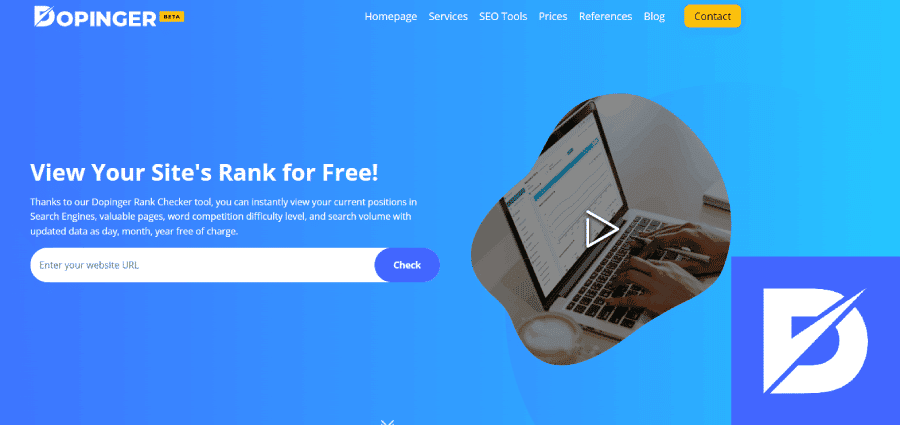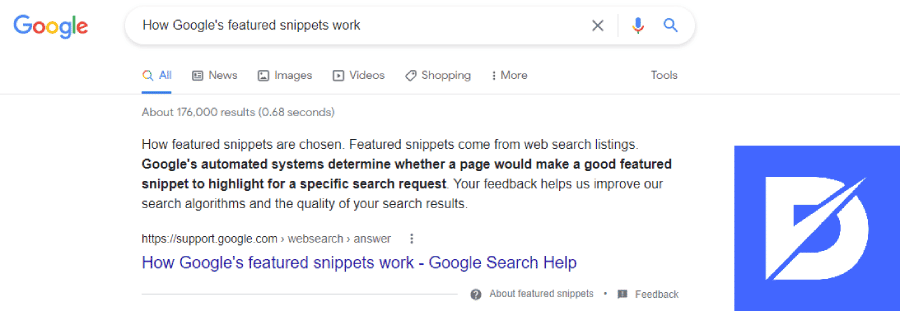In order to move a website higher in search engines, you must use SEO. Everyone knows that. However, there are also different topics about SEO that not everyone knows about. Most people have a rather superficial knowledge of SEO. But SEO is much more than keyword research, title tags, and meta tags. If you want to move your website higher using SEO, you will need much more of these. We aim to do exactly that in this article. In this article, we will go deeper into SEO. Thus, we aim to introduce you to advanced SEO techniques and strategies. So, let’s get started without wasting any time.
Best SEO Tactics That are Effective in 2023
You may think that effective tactics in SEO will always continue to be effective in a stable way. Unfortunately, I must say that you are wrong. Today, internet techs and AI are developing at an incredible speed. Almost every day, we feel the effects of this evolution more and more. These developments naturally show themselves in search engine algorithms. These algorithms are improving day by day, becoming more and more specialized in detecting the best results for search queries. That is an issue that affects SEO directly. Exactly because of this need, website owners are able to meet a new SEO technology every day. So, what do you think are the most up-to-date SEO techniques of 2025 mixed with these techs? Here is a list of the latest search engine optimization tips:
Realize the power of Core Web Vitals in the new online world
Many people may not know what Core Web Vitals has to do with SEO. If you’re one of these people, you may not have seen much harm from this lack of information until today. However, this has changed as of this year. Because knowing Core Web Vitals and understanding it well is now a necessity for success. In particular, it is important to understand the influential metrics that play a role in it. So, what makes Core Web Vitals so important?
The most important development that caused this situation is the Page Experience algorithm. Page Experience is an algorithm that Google recently introduced. It relies on Core Web Vitals while ranking web pages for search queries. Let’s take a look at how Google defines core web vitals.
One of these metrics, Cumulative Layout Shift, measures the visual stability of a web page. More precisely, it measures unexpected layout shifts in a web page. In this context, Google states that the ideal CLS measurement should be less than 1.
The Largest Contentful Paint metric measures the speed of the web page. To be more clear, it measures how long it takes for the main content items on a web page to load. Google emphasizes that ideal LCP measurements should be no more than 2.5 seconds.
The metric that measures page responsiveness, which is one of the key elements among core web vitals, is First Input Delay. This time represents exactly how long it takes for a web page to become interactive. Google states that this time should be less than 100 ms.
Lucky for you, Google hasn’t just rolled out a new algorithm based on core web vitals. At the same time, it has developed all SEO tools to perform the appropriate measurements. All you have to do is learn how to evaluate the reports you will get from these tools.

Analyze your competitors’ most trafficked web pages
Perhaps the shortest way to be successful in SEO is to examine your competitors with high SERP rankings. Thanks to they’ve already done all the research and work you’ll do to get to the point where they’re. By analyzing their websites, you may quickly learn the results of the hard work that you’ll have to carry out. However, you have to make sure that these approaches will work for your website as well. Therefore, you will need to test these approaches to be sure. At least it’s better than running all the work from start to finish on your own, right? Better still, if these approaches don’t work in testing, you’ll be gain powerful insights to develop new solutions. We may describe the step-by-step path you need to follow to complete this process successfully as follows:
- First, identify the most successful pages on your competitors’ websites.
- Analyze which sources these web pages drive organic traffic from.
- Identify which keywords these web pages use to drive traffic from those sources.
- Examine the content layouts of web pages.
- Identify websites that provide backlinks to these web pages. It is highly likely that these sources will also provide you with backlinks.
So, you may be asking, how do I analyze competing websites? There are a wide variety of online analysis tools that you can use for this task. However, if you want to have a more detailed analysis opportunity, you will have to take advantage of paid tools. Thanks to these tools, you may analyze your competitors’ websites in detail, from keywords to traffic sources. Moreover, paid tools also report to you the competitiveness of these keywords and traffic sources. Thus, you may increase your chances of promotion on the SERP screen with options with less competition.

Optimize your content based on current SEO techniques right away
What is content optimization? While optimizing the content on your website, you need to consider several stages. The first of these stages is to adjust the density of the primary and secondary keywords in the content. However, there should be enough keywords in the content. In this context, content length plays an effective role in adjusting the number and density of keywords. Adhering to all these issues, you must ensure that your content is at an excellent readability level for visitors. If you have set these elements appropriately, there are meta titles and description tags. In this context, you should also optimize your description tags and meta titles while optimizing your content.
There are many tools to use to optimize your content in terms of all these topics. Many of these tools may help you determine the appropriate word counts for your content. However, they also determine the most suitable keyword densities in proportion to the number of these words. Besides, you may successfully test your meta titles with these tools. Doing so will optimize your content for CTR. Finally, these tools also allow you to identify questions that are compatible with your target search queries.
The process of optimizing the content begins while creating the content strategy. Any content strategy consists of two stages. These are the stages of creating SEO-compatible content and optimizing existing ones. So, considering all these issues, you should optimize the content on your website as soon as possible. On the other hand, be sure to use the data you have gained while optimizing existing content while creating new ones. If you pay attention to these issues while developing your content strategy, your website will inevitably be successful in SEO as this process is the biggest part of getting your entire website SEO-friendly as a whole.
Use a keyword gap analysis
Let’s explain what keyword gap analysis first. It is an analysis that helps you identify keywords that competing websites use in their content but that you missed. Thus, you may fill in your gaps about keywords and content topics. That’s why it is called keyword gap analysis. You may also need help from some online SEO tools when doing a keyword gap analysis. One of the most useful tools in this regard is SEMrush. SEMrush allows you to compare your own website with four competing websites at the same time. As a result of this comparison, it will present a comparison table that provides detailed information about the keywords. That’s not all.
The tool also analyzes the high-volume keywords in this comparison table for competition. It examines whether your website has the authority to compete in search queries related to these keywords. You may filter out high-volume keywords with little chance of competing by keyword difficulty or volume. Keyword gap analysis offers excellent opportunities to fill the gaps in your content strategy.

Improving user experience for SEO will never go out of date
Why? Because Google has a quite determined stance on user experience. It believes that the best way to fully meet users’ needs is to improve the user experience. User experience is an effective way to increase customer loyalty to your brand. But more importantly, the user experience offered by websites directly affects Google’s reputation. In other words, your website’s user experience directly affects users’ loyalty to Google. Now, do you understand why Google attaches so much importance to this issue? For these reasons, Google pushes websites with bad user experience further down in the search results. It tends to raise websites that will give them the best experience so that users always prefer Google. So, how can you increase the user experience of your website to levels that will satisfy both your visitors and Google?
There are many stages in the user experience design process on websites. The first of these stages is to create an ideal user persona by recognizing your target audience. Thus, you will be able to build other elements of your website on this user persona. For example, while designing the user interface, you should definitely base it on the ideal user persona. After designing your user interface, you should also create the functionality map. It plays a critical role in organizing the pages on your website hierarchically.
Undoubtedly, visuals are among the elements that affect the user experience. That is especially critical for businesses that sell products online. In this context, it is important for the user experience to place visuals that will reflect the products from the right angles. Then, develop a prototype to test the user experience of your designed website. Performing usability tests is important to understand the user experience your website offers.

Snippets will be your new weapon in terms of SEO
Snippets will be one of the most effective SEO techniques in 2025, although not until today. One of the most important resources to provide more traffic in Google searches is snippets. Every Google user has come across snippets before, and they were able to learn the answer to the question they were looking for. Many SEO experts describe them as the holy grail of Google searches. Snippets are usually at the top of the SERP screen. They are in a rectangle containing short and clear answers for the relevant search query. In order to make a web page seen as a snippet, some optimization studies are required. Because website owners do not have the opportunity to determine which web pages will appear as snippets. So, let’s talk about these optimizations that may help you extract a web page as a snippet on the SERP screen.
The first thing you can do to be successful in this regard is to use long-tail keywords in your content. Researches also offer findings that support this situation. Content that focuses on a keyword consisting of a single word is below 5% as a snippet in the SERP screen. The probability of a long-tail keyword consisting of at least five words to appear as a snippet on the SERP screen is close to 20%. Another way to display your web page as a snippet on the SERP screen is to include questions. Finally, you must have prepared your content in snippet formats. These formats are videos, tables, lists, and paragraphs. Take care to prepare a short and clear answer to any question in these formats. After completing this format, you may continue to share your detailed explanations on the subject.
SEO Techniques That Are Effective, In Short
SEO techniques continue to evolve every year. This year, website owners had to meet many new SEO techniques. So, we have tried to explain how to increase SEO using search engine optimization techniques. You may increase your organic SEO traffic thanks to the SEO strategy you’ll develop by applying the techniques we’ve mentioned in this article. We hope this article has helped you to move your website higher in search engines.
If you think you need help with all these techniques, you might consider getting SEO services from an SEO agency.
Frequently Asked Questions About
Backlinks directly affect the authority of a web page. The authority of a web page has important to improve SEO.
These are cumulative layout shift, largest contentful paint, and first input delay.
It is a term that refers to the use of many identical or similar keywords in a piece of content. It has a negative impact on SEO.
Rank Math, Yoast SEO, Google Trends, SEMrush, Google Analytics, Google Search Console, Ahrefs, Ubersuggest, and Bing WebMaster.
Google has made the switch to a mobile-first index for a few years now. Thus, it primarily indexes mobile-friendly websites now.





No comments to show.